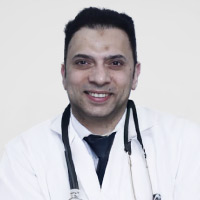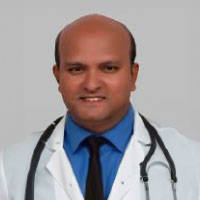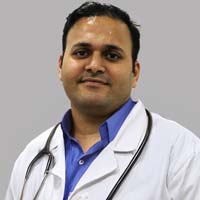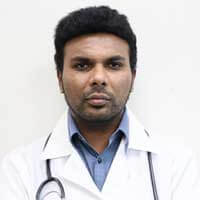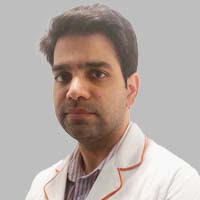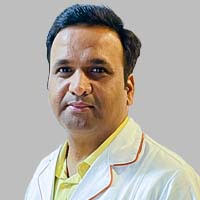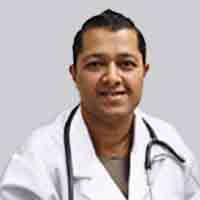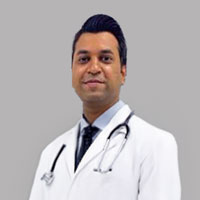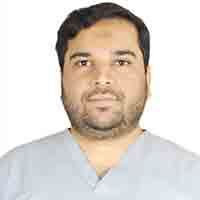Why is Hair Transplant Required?
The most common hair problem that requires hair transplant surgery is patchy or complete baldness. Excessive hair loss hampers your outer appearance. It can be due to many abnormal factors in an individual. The most common reason for hair loss is aging. Other reasons for loss of hair can be as follows:
- Hormonal Changes
- Poor circulation of blood to your scalp
- Hereditary hair loss issues
- Family history of baldness
- Trauma
- Stress
- Scalp infections
- Illness
- Excessive vitamin A in your system
- Iron deficiency/protein deficiency
- Burns on your scalp
- Lack of nutrients
- Rapid loss of weight
- Autoimmune disease
- Side effects of any hair products
- Dandruff
- Cancer (which leads to hair loss)
- Chemotherapy
Such issues can lead to excessive hair loss requiring a hair transplant surgery. Other common reason that require hair transplant include:
- Cosmetic purposes
- Thinning of hair
- Bald spots
- Disorder on your scalp such as burns or infections
Pre-operative Preparation
There are many preoperative preparations taken into consideration to avoid various risks associated with a hair transplant surgery. At the initial part, your surgeon will monitor your scalp and analyze it. Make sure you discuss with your doctor about what you prefer and expect from this transplant surgery. Take suggestions and discuss with him/her the various ideas that can be suitable for your hair line and scalp.
Make a note about which is the best method to implant hair based on your situation. Also, discuss about the necessary results that can be achieved from each method. It can take one or more sessions to completely decide about all the points related to your hair transplant surgery.
Certain tests can be performed on your scalp as well as to calculate your hair density.
Folliscopy
Folliscopy is a diagnostic test of your hair follicles. It utilizes a phototrichogram system to monitor your hair follicles. It visualizes the base from where your hair is attached, by using a microscopic camera. These pictures are seen on a computer screen that enlarges and displays it. It not only gives you pictures of your hair follicles but also helps in measuring the density of your hair, hair shaft diameter and the proportions of various types of hair present.
Your surgeon measures and compares these parameters to assess the type of problems you have and decide the best surgery method to treat it. This test also helps to achieve postoperative results more accurately.
Blood Tests
Blood tests can be conducted to check if there is any bleeding or blood clots present in your system. Patients who have blood clotting disorder must inform their doctors in advance before the main procedure.
Apart from tests, your doctor will suggest you about all the instructions to be followed before the hair restoration procedure. Avoid using any medicines that can affect your surgical process. Smoking and alcohol intake can badly affect your hair transplant surgery. Avoid it.
Pristyn Care’s Free Post-Operative Care

Diet & Lifestyle Consultation

Post-Surgery Free Follow-Up

Free Cab Facility

24*7 Patient Support
Day Before Surgery
You must visit your health care center, a day before your main surgery for various check-ups and other aspects which are important. A physical body check up is mandatory before your surgery. It notifies your surgeon about your health status. Your vitals are also measured to see whether your body is not weak. A general check-up shows you if there are any abnormal conditions present, for example, infections or high blood pressure, etc.
A doctor will advise you regarding how long you should fast before surgery. Do not consume any medicines prior to your surgery. Although, make sure to inform your doctor about the following:
- If you are diabetic
- If you have any other health disorder
- If you are allergic to anesthesia or any other medicine
- If you have any medical history
Your doctor will give you all the details about the schedule of the procedure day. Ensure that you follow it well. He/she will educate you about the complete surgical procedure of hair transplantation and other terms and conditions of the surgery. You can sign the consent form if you agree with all these aspects.
Procedure Day
On the day of hair transplant surgery, it is advised to be on time at the surgical center. A hair transplant surgery is conducted under the influence of local anesthesia. The type and amount of anesthesia given to you will depend on the extent of your surgery and grafting mechanism. You can also be awake during the entire procedure. Certain medications can be provided to you to let your body relax during the surgery. The work of local anesthesia is to numb the surgical section. Therefore, nurses will inject it under the skin of your surgical areas.
Methods/Techniques of Hair Transplant Surgery
Hair transplantation can be performed using different methods depending upon the amount of hair being implanted. It can either be performed all together or divided into sessions based on the number of hair follicles. Before we classify various methods, let us first take a note about the two types of grafts involved in this surgery mechanism.
There two main techniques to perform implanting include:
- Slit grafts
- Micro Grafts
A slit graft consists of 4 to 10 hair strands per cutting (here, called as a graft). A micro graft consists of one or two hair stands per cutting based on amount of scalp required to be covered.
The surgical procedures used for hair transplant are as follows:
Hair Transplant Graft
Common amount of hair follicles that can be implanted per session can be around 1,000 to 2,000. However, if you have more areas to cover in one session, your doctor may require around 4,000 hair follicles implanted. Every hair transplant graft session may need hours for its completion. Therefore, many patients prefer a hair transplant surgery in two or more separate sessions.
The procedures of a hair transplant graft include:
- The donor site from where hair will be extracted is first sedated so that you do not feel any pain when hair is collected.
- The hair from the donor's site is cut short enough to make it easy to handle.
- Small areas of hair-bearing scalp are taken by your surgeon from the donor's site and implanted on the recipient site.
A grafting procedure utilizes various surgical instruments to harvest the donor scalp. Instruments like round tubes called as punch, or a scalpel can be used for harvesting. A punch graft can harvest around 2 to 15 hair strands, depending on the tube size. If a slit graft is used, around 4 to 10 hair strands can be easily extracted at once. Longer strip grafts can collect up to 40 hair follicles at once. Based on the requirements, your doctor can decide which type of instruments to use for the hair transplant graft procedure. It takes about two to eight hours to completely implement the entire surgical procedure of a hair transplant surgery. This method is an out-patient procedure.
Flap Surgery
An extensive type of hair transplant uses a flap surgery methodology. Such type of surgery is performed if the patients need larger flaps of tissues rather than small grafts for hair transplantation. This type of surgery requires general anaesthesia. Patients are required to stay back at the hospital after the surgery.
The procedural steps of a flap surgery include:
- The procedure begins by injecting anesthesia into the patient's body.
- A tissue expander, which is a balloon-like instrument, is placed under the skin of the hair-bearing region of your scalp. Continuous saline is administered on the tissue expander for over a week's time in order to inflate it. Therefore, this part of the surgery is conducted in various slots, dividing the slots throughout the week. For example, one slot can be conducted any time today, and the next slot is scheduled for tomorrow. This step enhances that particular region to grow and develop more skin cells throughout the week.
- This process is continuously carried out for about two months. During this period, the scalp has developed enough skin cells that can be now used for hair transplantation procedures.
- The bald area of your head is then removed by cutting it. Some part of the newly developed region of hair-bearing skin is cut and fixed to the required location by suturing it. Partial removal of the flap section allows it to retain a good amount of blood supply in that area.
Surgery to Reduce Baldness
A scalp reduction surgery is a method used to treat certain bald regions of your scalp, especially its back and top sections. These regions do not include the front section of the scalp.
The steps of the procedure include:
- You will be initially sedated with local anaesthesia around your scalp.
- Your surgeon will cut and discard a U or Y shaped strip of the bald skin of your scalp.
- The scalp is then loosened and the cuts are joined together and sutured.
Other Types of Hair Transplant Surgeries
Other types of hair transplant surgeries involve implanting hair on other parts of your body apart from your head.
Such types include:
- Eyebrow Transplant
- Beard Transplant
- Body hair implants
Post Procedure
Recovery at the Hospital
If you have had a flap surgery or other extensive type of hair transplant surgery, you may require to stay back at the hospital after surgery. Other techniques of hair transplant are out-patient and do not involve hospital stay after surgery.
Based on the extent of your surgery, you may experience some problems during your hospital stay post surgery. If you are injected with general anesthesia, it is possible that you may experience numbness after the surgery is finished. At such times, your doctor will ask you to rest for some time until the influence of anesthesia wears off. You can also experience heavy pain, and throbbing during the stay which is followed by slight discomfort. Your doctor will provide or inject certain medication to ease your pain. Post operative antibiotics are also prescribed to you to avoid any occurrence of graft wounds or other infections.
Nurses will cover your surgical sections with cotton bandages followed by cotton dressing to keep the bandages intact at one place. This also helps to prevent bleeding. Doctor can check whether there are any signs of infection or other abnormal condition developing. Necessary treatments will be carried out if there is occurrence of any such issues.
Recovery at Home
It is likely that patients experience pain and discomfort for some days post surgery. Some patients also experience intense throbbing in your scalp region. Take necessary pain killers prescribed by your doctor to get relief from such problems. Follow all the important instructions provided by your doctor for a better healing. Also, make sure you take necessary precautions as well.
For earlier few days of your surgery, your surgical areas will be swollen. You can also experience bruising and a tight feeling around your wounds. When you undergo healing, there can be a development of small scabs over your wounds. Your doctor will guide you on how to deal with all these issues at home.
Follow-up Appointments
The main aim of conducting follow-up appointments after hair transplant surgery is to monitor your recovery process. Doctor will also check how well are the medicines working and improving your health condition. If there are any other problems seen, he/she will carry out treatment measures to fix them.
Follow-up sessions also involve removal of your old bandages and replacing them with new fresh ones. This also includes cleaning your wounds with anti-septic solution unless they heal completely. Such steps are carried out in order to avoid the occurrence of infections.
Precautions
When you have undergone a surgery, along with following necessary instructions, it is also important to follow all the precautions. These precautions are taken to avoid any complications.
Precautionary measures after a hair transplant surgery include:
- Do not let your surgical areas get exposed to water
- Avoid bending, or any other activities that can put a strain on your wounds
- Avoid drinking and smoking when you are under medications
- Avoid wearing caps or any other things to cover your head
- Avoid exercise or rigorous movements
Risks And Complications
There can be some possible risks involved after your hair transplant surgery. It is advisable to be prepared for some of these common risks and complications that may likely occur.
- Side effects of general anesthesia, causing allergy
- Unusual bleeding
- Infections
- Nerve damage which can have adverse effects of your sensation
- Redness
- Swelling of your scalp
- Scarring
- Itchiness on your scalp
- Skin graft failure
- Death of tissues around your wounds
- Abnormal growth of hair
- Numbness
- Formation of scabs
- Inflammation of hair follicles
Some possible complications may also occur out of a hair transplant surgery. Your scalp may stretch back in time and causing the bald spot to reoccur. Also pulling and tightening the skin from the donor's site can reduce elasticity from that area. It can also loosen the scalp causing low hair density.
Sutured areas of your scalp may show large visible scars. Patients may also experience 'slot deformity' development around the hair implanted areas. A slot deformity refers to change in the direction of your hair leading to hair growth at abnormal directions. It can either look like a partition or circular slot.
The above article, illuminates us about hair transplant surgery. Various information regarding hair implantation or hair restoration is also explained. Also, risks and complications associated with this surgery are mentioned. If you are planning to go for a hair transplant surgery, make sure you select the best and suitable method for a better appearance.






























